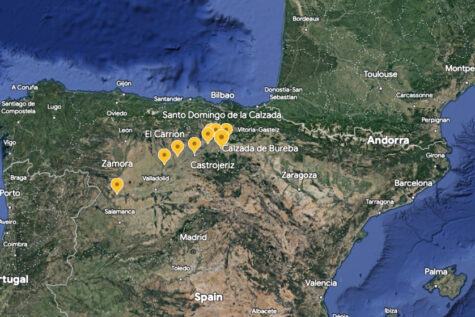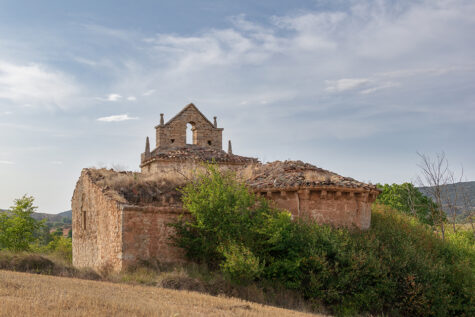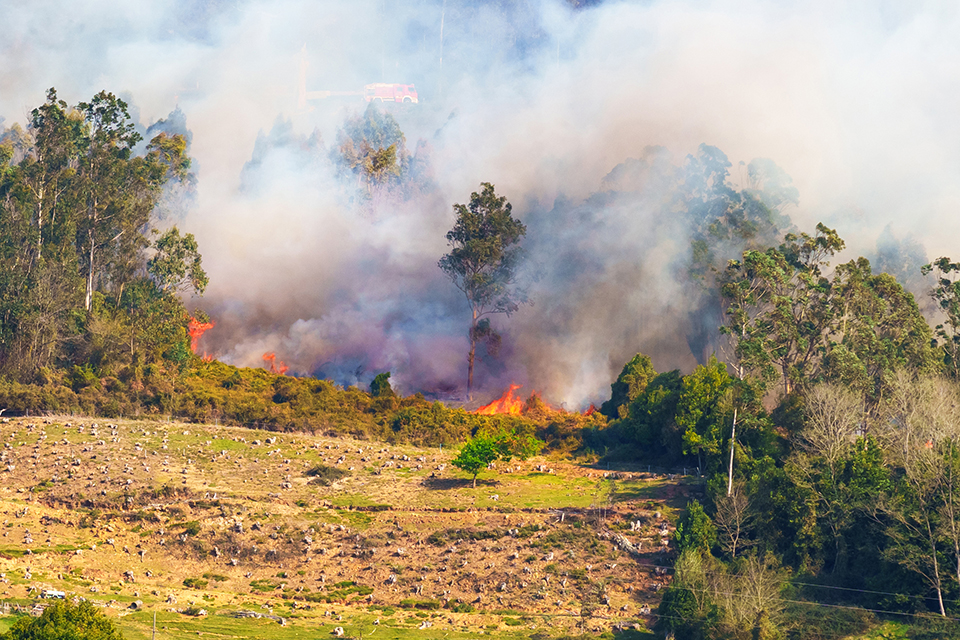This summer, 2023, wildfires have once again laid waste large areas of Southern Europe. A tenth-century conflagration in Spain provides a fascinating comparison between medieval and present times.
Causes and socio-economic implications of the Castilian wildfire of 949
By David Peterson
Journal of Medieval Iberian Studies 2013. Open Source
ABSTRACT:
In June 949, “a flame emerged from the sea and consumed many cities, towns, men and beasts, and even the rocks of the sea itself. In Zamora, a suburb [barrio] was burnt, and in Carrion and Castrojeriz, too; in Burgos, a hundred houses, and also in Briviesca, Calzada, Pancorbo, Buradón and many other villages were burnt.”
From: Martín, José Carlos. “Los Annales Castellani Antiquiores y Annales Castellani Recentiores: edición y traducción anotada.” Territorio, Sociedad y Poder 4 (2009): 203–26. Translation by David Peterson as quoted in the article.

The area hit was the Northern Meseta, reaching from Zamora and sweeping across Burgos into the Basque countryside. If nothing, the entry in the chronicle documents that huge wildfires are nothing new. However, the tenth-century conflagration was extraordinary, leading to a quintuple of the extant charters. All dated to the winter and spring, they arguably witnessed the hunger and deprivation caused by the wildfire, which was lessened by religious institutions; later profiting from the misery of the peasants by accepting their donations of land.
Modern explanations focus on the build-up of fuel in the underground caused by the abandonment of humans and animals of the countryside pared with the mismanagement of the forests and woodlands, where plantations with fast-growing trees like the Eucalyptus globulus
or the Pinus pinaster have been allowed to take over. A significant third factor is the climate deterioration caused by global warming. However, the main explanation focuses on rural abandonment and the accompanying lack of traditional livestock in the landscape. Today, the landscape(s) needs settlers to further extensive agroforestry, extensive grazing and a transition towards native, mixed and wilder forests.
The question raised in the new research carried out by David Peterson on the tenth-century catastrophe is if the explanations offered today have some semblance to the likely causes of the ravaging wildfires in the tenth century.
The Cultural Geography

In the article, David Peterson presents several hypotheses reflecting the region’s cultural geography. The map shows that the localities mentioned largely followed the ancient Roman road traversing the Northern Meseta. Perhaps, the conflagration was not a wildfire but a metaphorical description of military events on the border. However, the chronicles do not mention major military campaigns which might fit.
Was it, then, the result of an earthquake? For centuries this was the preferred explanation, which even found its way into Wikipedia. Once more, the answer is no, based on the lack of geological evidence, leaving us with an explanation more akin to the present-day situation.
In the article, David Peterson points out that the likely explanation was probably the result of a situation much like the present, where wildfires explode when a period of drought is followed by stormy weather, including lightning.
However, the fire had to be fed to succeed in spanning 250-300 km across Northern Spain. Was the landscape densely forested and subjected to the dehesa system? Or cleared to make room for colonists following in the wake of the Castilian armies? This was the case in the nearby Basque countryside, where wheat and barley cultivation dominated in the late 9th century.
Indeed, this is the most likely explanation, writes David Peterson, that the Bureba basin had been cleared in the early 10th century, making way for vineyards and leading to widespread deforestation while leaving felled trees and debris behind. Albeit the mechanism behind the anthropogenic impact differed – early deforestation caused by colonists in 949 and abandonment in the 21st century – both landscapes may be characterised as decidedly fire-prone. Compared to this, the hilly dehesa-landscape bordering on the forests in the Montes de Oca further south of the Calzada was seemingly not hit as vehemently pinpointing the different characters of the two ecosystems.
The publication is inspiring to anyone interested in the debate concerning the prevention of wildfires consuming the Iberian peninsula and the further Mediterranea in the wake of the climate crisis.
ABOUT THE AUTHOR:
David Peterson has a degree in History from Oxford University and a Doctorate (2006) in Medieval History from the Universidad de Burgos. His research centres on early medieval society in Northern Iberia and is based mainly on written sources and onomastics. He is the author of two monographs on, respectively, the Sierra de la Demanda (2006) and the Alto Ebro region. He currently concentrates his research on medieval documentation and on the onomastic evidence for Islamic influence on early medieval Castile. Since 2015 he has taught Medieval History at the Universidad de Burgos
Featured Photo:
Wildfire in Northern Spain. © Pavelyar105. Dreamstime.com 274572675
